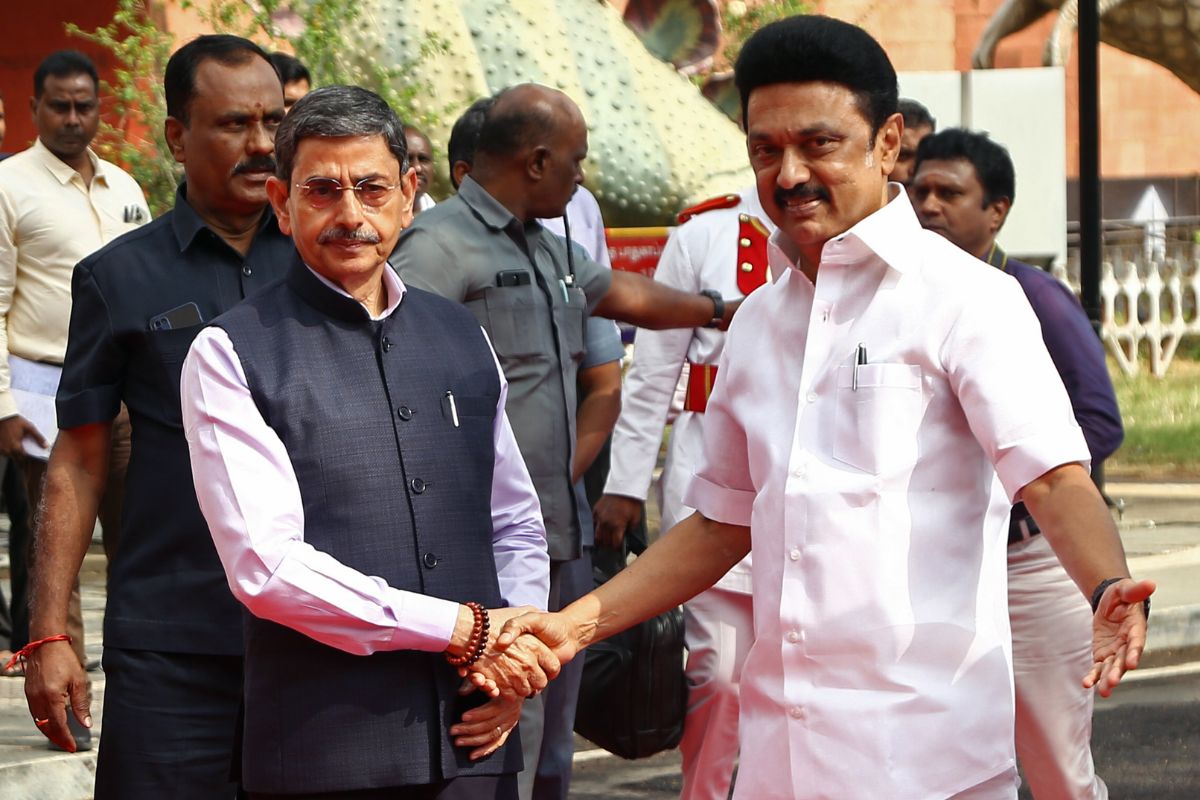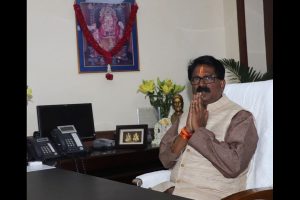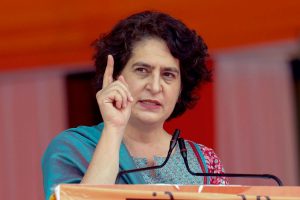The omission of a line containing the word ‘Dravida’ during the rendition of the Tamil invocation at an official event, presided over by Governor RN Ravi, has sparked a political controversy.
The incident led to a war of words between the Governor and Chief Minister MK Stalin. What is the significance of this song, and how did it become the state anthem of Tamil Nadu, earning a place of pride among the Tamil people?
Chief Minister Stalin, who also serves as the president of the ruling Dravida Munnetra Kazhagam (DMK), accused the Governor of omitting a part of the iconic song and questioned whether Ravi was acting as a Governor or an ‘Aryan’.
In response, Ravi called Stalin’s remark cheap and unbecoming of his office. Despite an apology from the event organizers, Doordarshan Chennai, and Ravi maintaining that he usually sings the song in full with devotion and pride, Stalin remained unconvinced.
Unlike in North India, where the national anthem is traditionally sung at official events, Tamil Nadu begins its ceremonies with the Tamil anthem and reserves the national anthem for the end of official celebrations.
WHO COMPOSED THE SONG AND WHEN?
Prof P Meenakshisundaram of Maharaja’s College, Thiruvananthapuram, composed the song as an invocation for his celebrated literary play Manonmaneeyam, which contains 4,500 lines. An Alappuzha-born scholar and professor of philosophy, he published the poetic drama in 1891, inspired by Lord Lytton’s ‘Secret Way.’
WHAT IS ITS MEANING?
A rough translation suggests: Damsel Tamil, adorned by rivers and seas, you are the face of Bharat, renowned across the world. Like the tilak on your chiseled face, you are the elite Dravidian land of the Deccan. The fragrance of your tilak spreads joy and happiness worldwide, and your fame echoes in every corner, oh Tamil angel. May your eternal youthfulness and majesty continue to captivate us forever.
WHAT WAS THE POLITICAL CONTEXT OF THE CAMPAIGN TO MAKE IT THE STATE ANTHEM?
The demand to recognize the song as the state anthem dates back to 1913, initiated by the Karanthai Tamil Sangam in Thanjavur. This period marked the Tamil renaissance, with ancient classics being printed in the late 19th century. The anti-Hindi agitations in 1934 and 1965 further fueled pro-Tamil sentiments and politics.
Between 1940 and 1965, the call for a separate ‘Dravida Nadu’ was championed by rationalist reformer ‘Periyar’ EV Ramasamy and his non-Brahmin ‘Dravidar Kazhagam.’ The DMK, founded by CN Annadurai in 1949, abandoned the idea of a separate state after the Chinese aggression but continued to uphold Tamil as its core ideology.
WHEN WAS IT MADE THE STATE ANTHEM?
The song was officially declared the state anthem in June 1970 by the Karunanidhi-led government. This decision aimed to provide an alternative to religious invocations, in line with the DMK’s rationalist principles.
However, the song was edited to remove references to Sanskrit and other South Indian languages, such as Kannada, Telugu, and Malayalam. Music composer MS Viswanathan provided the score, and playback singer P Suseela lent her voice, as MS Subbulakshmi declined the opportunity.
In 2021, the DMK government led by MK Stalin mandated that the anthem be sung at all official events, with everyone standing except for those with disabilities.
This decision followed controversies, including the anthem being skipped at an IIT-Madras convocation and an earlier incident in 2018 when Vijayendra Saraswati of Kanchi Mutt remained seated during its rendition at a book release event. The latter issue even reached the High Court.
HOW TAMIL HAS BECOME A POLITICAL TOOL IN DRAVIDIAN POLITICS?
The passion for the Tamil language runs deep in Tamil Nadu, with many people incorporating ‘Tamil’ into their children’s names as a prefix or suffix. The Dravidian movement has historically used Tamil to counter the perceived hegemony of Sanskrit (and Aryan influences).
As noted scholar Sumathi Ramaswamy explains, Tamil has been deified and transformed into a goddess, mother, and maiden figure.
The anti-Hindi agitations saw several individuals self-immolate, and the 1965 agitation helped propel the DMK into power in 1967. Since then, no national party has held power in Tamil Nadu.












